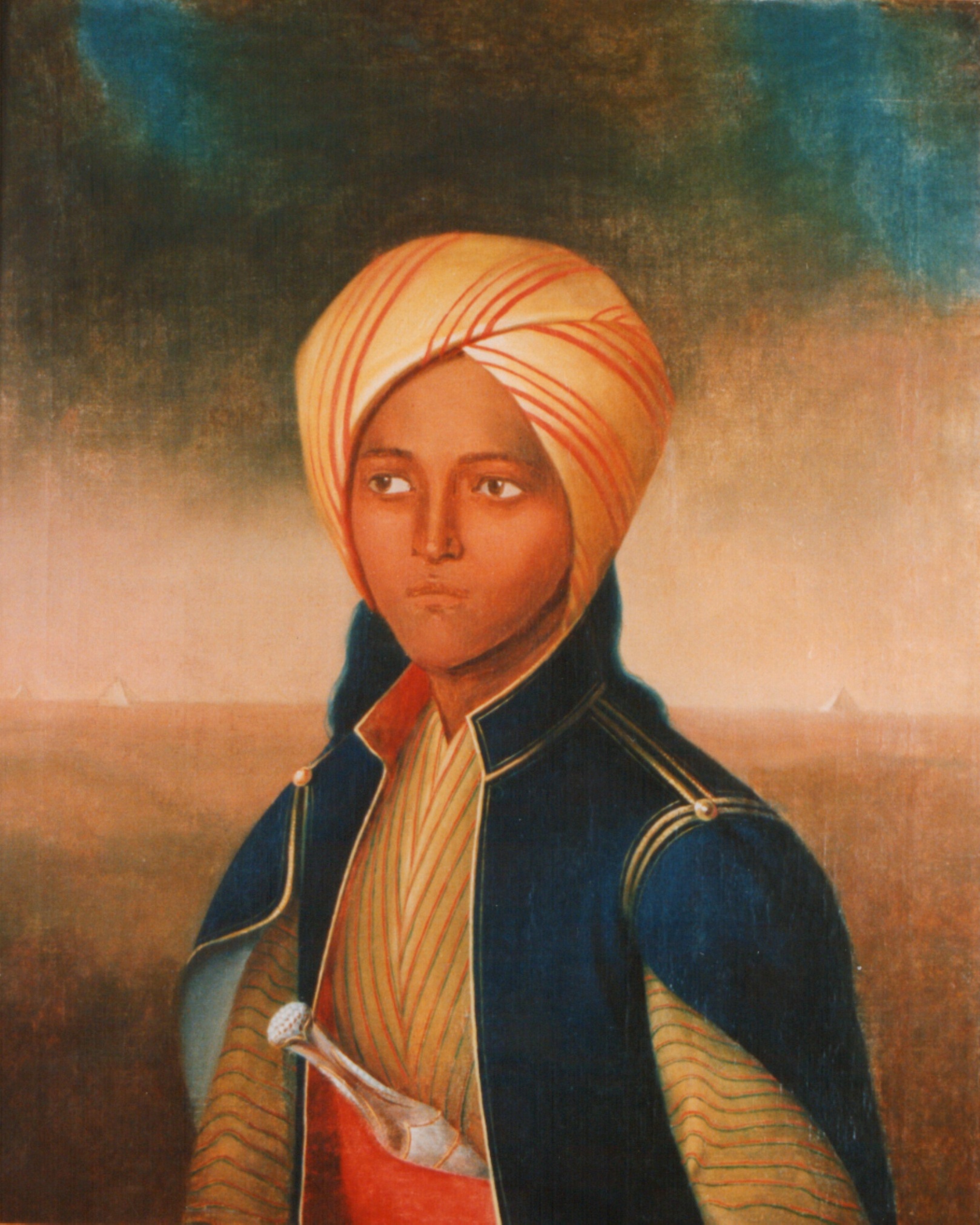
On 27 October 1840 a teenaged girl known as Machbuba died of tuberculosis in the Saxon town of Muskau, near Cottbus. Although she had not been resident there for long, she had become infamous as the slave and concubine of Prince Hermann von Pückler-Muskau, an eccentric garden designer, travel writer, and womanizer. Machbuba’s story provides a notable contrast with those of other slaves acquired and brought to Central Europe around the same time, like August Sabac El Cher, who found great success despite their precarious dependence on their masters.
Although it is difficult to say with any certainty, it seems that she was the daughter of an official of the Oromo people in the Ethiopian highlands. A disastrous war led to the death of most of her family and left her in the hands of slavers who took her to the slave market in Cairo in 1837. There, apparently wearing little more than a veil and a belt decorated with shells, she attracted the attention of Pückler-Muskau, who later enthused about the maturity of her naked form. She was about twelve years of age and he fifty-two. Although he professed to initially having only an academic interest in her, in any event she soon became his valet, nurse, companion, and concubine.
Machbuba traveled through the Middle East with the Prince for three years before he decided to return to Europe in 1840. He stayed in Vienna for a while, chiefly to avoid his ex-wife, who disapproved of Machbuba, and took the opportunity to show off his exotically dressed concubine in high society. She charmed, but she had already begun to fall ill. The Prince spared no expense in seeking treatment for her at the finest spas, but it was ultimately in vain. She died alone, the Prince keeping her at a distance because their extramarital relationship was creating a scandal.
According to his own account, the Prince had fallen deeply in love with her, and it seems that these feelings were as sincere as they were unreciprocated by Machbuba. In Pückler-Muskau’s writings we can see glimpses of a headstrong young woman confident enough to test his authority, although his harsh punishments make clear that he embraced the power that came from being the master of slaves. Their relationship was anything but symmetrical, but at the same time one must wonder whether she would have been able to use that relationship as leverage as she grew older. Perhaps, like Ignatius Fortuna or Angelo Soliman, she could have secured for herself a comfortable position in which she could exercise some autonomy, or perhaps as a woman such opportunities would have been far more limited.
After Machbuba’s death Pückler-Muskau, ever the publicist, wrote her into his public image as one half of a passionate, unlikely, and tragically abbreviated love story. This story became a local legend that has been updated through a 1935 novel and a 2010 play, that is maintained by the Prince’s estate to this day, and that has even incited controversy in recent years as some have crassly appropriated Machbuba’s memory to add exotic and erotic flair to local “traditions.”
Jeff Bowersox
deutsch
Source: Unknown artist, Machbuba (ca. 1840). Painting, oil on canvas, 70 x 50cm. Image courtesy of the Erbengemeinschaft der Grafen Pückler aus dem Bestand der Stiftung Fürst-Pückler-Museum Park und Schloss Branitz. Photograph ©Olaf Schubert, 1996.

Machbuba (ca. 1825-40) by Jeff Bowersox is licensed under a Creative Commons Attribution-ShareAlike 4.0 International License.
Permissions beyond the scope of this license may be available at https://blackcentraleurope.com/who-we-are/.